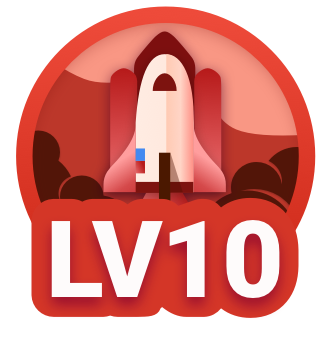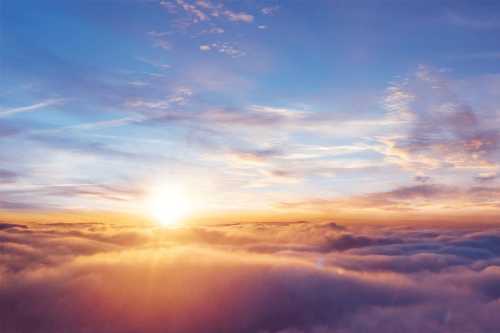App
Customer Support
Find Bookings
#GetDiscountNotDependingOnLuck Wat Sri Chum is an ancient religious site located outside the northern city wall of Sukhothai Historical Park, Muang Kao Subdistrict, Mueang Sukhothai District, Sukhothai Province. This temple enshrines a large Buddha statue in the Mara-Vijaya posture called "Phra Atchana". The Buddha statue is enshrined in a pavilion, which has now collapsed, leaving only the surrounding walls, making it an outdoor Buddha statue to this day. The structure of Wat Sri Chum is more special than other temples in Sukhothai Historical Park because it does not have a main chedi, but is replaced by a pavilion enshrining a Buddha statue inside, which is located behind the main chapel. This temple is believed to have been built during the reign of King Ramkhamhaeng the Great, or around the 19th Buddhist century. It was first restored by the Fine Arts Department in 1953 and the pavilion area was restored again in 1967. Phra Phuttha Atchana is considered one of the most important tourist attractions and symbols of Sukhothai Historical Park. In addition, the area on the northern side of the pavilion also consists of a large wild mango tree that is more than 200 years old, with a height of more than 20 meters. It has been preserved and registered as a national heritage by the Ministry of Culture. "Wat Sri Chum" comes from the original local word meaning Bodhi tree. Therefore, the name Sri Chum means a grove of Bodhi trees. However, in the book of the Royal Chronicles of Ayutthaya written in the late Ayutthaya period, this meaning was not understood, so the place was called "Rishi Chum". Wat Sri Chum is assumed to have been built during the reign of King Ramkhamhaeng, as stated in the Sukhothai Inscription No. 1 that At the foot of the bed of Sukhothai city... there is Phra Achana, there is a castle. The principal Buddha image in the pavilion is therefore called "Phra Achana". The pavilion is 32 meters wide on each side, 15 meters high, and the walls are 3 meters thick. The left wall has a hole for a staircase. The wall leads to the roof. There are old paintings on the walls of the tunnel, but almost all of them are faded. This painting is almost 700 years old. The ceiling and walls have 50 slate slabs carved with lines depicting stories from various Jatakas, arranged continuously. All of these are considered to be the oldest Thai paintings. During the Ayutthaya period, when Somdet Phra Naresuan the Great declared independence in 2127 at the city of Kraeng, causing other cities to cancel their tributes to the Burmese, but there was still the city of Cheliang (Sawankhalok) that refused to comply with his royal command. So he led his army to conquer Cheliang and gathered his army at Wat Sri Chum before going to attack Cheliang. Since the battle was between Thais and other Thais, the soldiers were not motivated to fight. Somdet Phra Naresuan therefore planned to boost the soldiers’ morale by having one of his soldiers climb up the stairs behind the Buddha image and speak words of encouragement to them, which gave the soldiers the motivation to fight. As a result, the legend of the talking Buddha at Wat Sri Chum arose. Phra Naresuan also held the water-pouring ceremony to pledge allegiance at this temple. According to evidence, this temple was extensively renovated during the reign of King Lithai and has been continuously maintained. It is assumed that this temple was abandoned during the late Ayutthaya period until the reign of King Rama IX when a renovation project was launched in 1952. The restoration of the Phra Achana Buddha image was initiated by Professor Silpa Bhirasri and Professor Khian Yimsiri. As a result, the temple is in its current state. "Phra Achana" The word Achana has been interpreted as referring to the Pali word "Ajala", which means "one who is unshakable, steadfast", "one who is worthy of respect and worship". Phra Achana is a Buddha image in the Mara-Vijaya attitude, sitting cross-legged. The material is stucco, the inner core is made of brick and laterite. The lap is 11.30 meters wide and 15 meters high. The Buddha image is large and fills the entire temple. It is in the Sukhothai style.
เปรมยุ
Popular Trip Moments
Including tourist attractions in Chiang Mai | Lanna Mini Zoo (Lanna Mini Zoo) 🐰🦆🐒 | Rimping Supermarket at Meta Mall | 🍃 Yoo Pha – อยู่ป่า | 🌲 Yoo Pha – อยู่ป่า | 🌲 Yoo Pha – In the forest, but not alone | Travel to San Sai area, Chiang Mai | Auntie Dang's delicious noodles 🍜🔥📍San Sai, Chiang Mai | Enjoy the good atmosphere at "Suan Kaew Kham Ei" | 💝Slow Bar Rooftop Chiang Mai, beautiful shop, delicious food | ROASTNIYOM - Doi Saket branch, coffee lovers can't miss this. | Tam Coffee Chiang Mai, a chic cafe for coffee lovers☁️🥖👋🏻 | After summer | 🥬 Ohkajhu Vegetable Garden [San Sai] ● Chiang Mai ● | Grindsize Evergreen CNX ☕🌾 | So Into by Takarkad Cafe ☕️🌳✨ | Chiang Mai's Hidden Gem for Family Water Fun! | Let your wishes flow with light and relax in the Thai night. | Phli : ผลิ 봄 at Dollaya | #Rai Khing Temple | A house in the middle of a green rice field, near Chiang Mai city 💚🌾 | Yoohoo - Yoohoo, a dessert shop in the Santran area | Roastniyom coffee - Kad Sam Yaek branch | Southern Recipe - Delicious curry rice, direct from the South | Bandin Coffee, San Sai, Chiang Mai | Roastniyom Coffee - A popular coffee shop in Payap branch | "Tea House" Maejo 💖✨ | คาเฟ่ Slow Bar ย่านแม่โจ้ "Green tree" | Green tree ☕ | Green-Themed Resort Near Chiang Mai
Recommended Attractions at Popular Destinations
Popular Attractions in Bangkok | Popular Attractions in Manila | Popular Attractions in Tokyo | Popular Attractions in Taipei | Popular Attractions in Hong Kong | Popular Attractions in Seoul | Popular Attractions in Kuala Lumpur | Popular Attractions in Los Angeles | Popular Attractions in Shanghai | Popular Attractions in New York | Popular Attractions in Shenzhen | Popular Attractions in Osaka | Popular Attractions in Singapore | Popular Attractions in London | Popular Attractions in Guangzhou | Popular Attractions in San Francisco | Popular Attractions in Beijing | Popular Attractions in Macau | Popular Attractions in Bali | Popular Attractions in Jakarta | Popular Attractions in Paris | Popular Attractions in Ho Chi Minh City | Popular Attractions in Istanbul | Popular Attractions in Phuket | Popular Attractions in Chicago | Popular Attractions in Seattle | Popular Attractions in Toronto | Popular Attractions in Orlando | Popular Attractions in Cebu | Popular Attractions in Chiang Mai
Popular Restaurants in San Sai
Chiang Mai Smoke House | Enoteca Great Fine Wine | Jario Coffee | Baan A Din | Lumdee Te Khuadang | Pizza Giardino | Soul Garden Cafe' | Chef Steak | I Am Goourmet | Lab Gai Ban Hong-Branch 3 | Aui Mee | We-La-Dee Cafe & Restaurant | Pizza Mania | Moon Cafe' | Mai Saigon Restaurant And Bar | Bucoliq | Baan Pasta Chiangmai | Bualuang Studio Coffee | Toon Pizza | Heaven Esan | Eat on Earth Restaurant and Bakery | Kasalong Cuisine | Khao Soi Cafe | Kan Kebab Homemade | Kao Soi & Kao Mok Krua Yalai Mae Jo | Merry Cottage | Kuangkam cafe ร้านข่วงขาม คาเฟ่ | Shogun Japanese Restaurant | MANA BURGER | little home kitchen
Popular Ranked Lists
Popular Luxury Hotels in Brasilito | Top 50 Best Things to Do in Melaka | Top 20 Best Things to Do in Birmingham | Top 50 Must-Visit Restaurants in Phuket | Top 10 Trending Attractions in Zhoushan | Popular Luxury Hotels Near Slupski | Top 10 Trending Attractions in Jeju | Top 50 Must-Visit Restaurants in George Town | Top 50 Must-Visit Restaurants in Bali | Top 20 Best Things to Do in Doha | Top 10 Luxury Hotels near Sorrento | Top 10 Luxury Hotels near Fishers | Top 50 Must-Visit Restaurants in Koh Samui | Popular Best Things to Do in Qinzhou | Top 50 Must-Visit Restaurants in Xi'an | Top 20 Best Things to Do in Ottawa | Top 50 Must-Visit Restaurants in Frankfurt | Popular Luxury Hotels in Erdene | Popular Luxury Hotels Near Balbieriskio seniunija | Popular Best Things to Do in Duyun | Top 20 Luxury Hotels near Anatolikos Olimpos | Popular Best Things to Do in Amman | Popular Best Things to Do in Xuwen | Top 50 Must-Visit Restaurants in Suzhou | Top 10 Luxury Hotels near Craiglie | Popular Luxury Hotels in Tov | Popular Premium Hotels in Columbus City Township | Popular Premium Hotels in Oudtshoorn | Popular Luxury Hotels Near Bneid Al Qar | Top 50 Must-Visit Restaurants in Langkawi
About
Payment Methods
Our Partners
Copyright © 2025 Trip.com Travel Singapore Pte. Ltd. All rights reserved
Site Operator: Trip.com Travel Singapore Pte. Ltd.
Site Operator: Trip.com Travel Singapore Pte. Ltd.





















